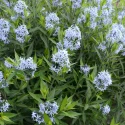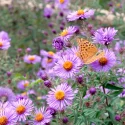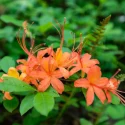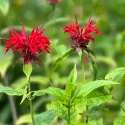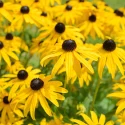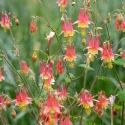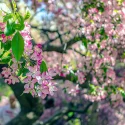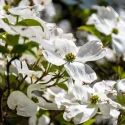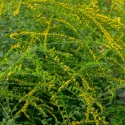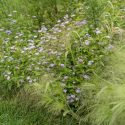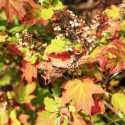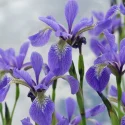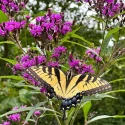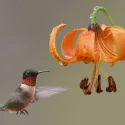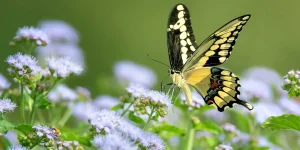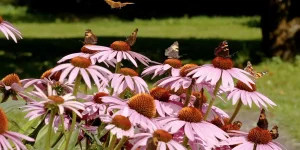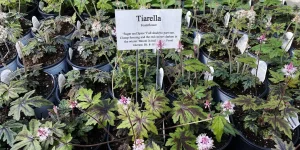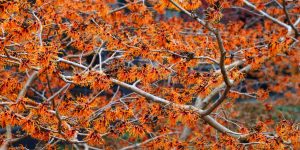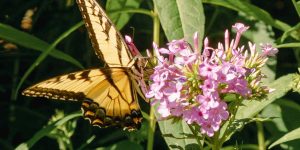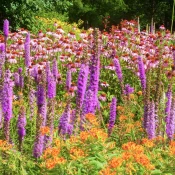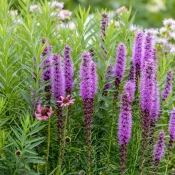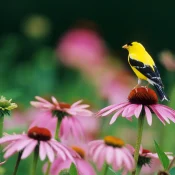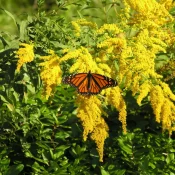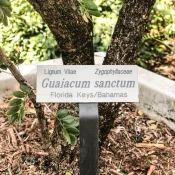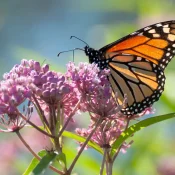I’m nervous. What if I mess something up?
Chances are, at some point, you’re going to plant something in the wrong spot. Maybe a plant will be too tall, too short, or struggle in the area you chose for it. You might lose a few plants to frost, a lawn mower mishap, or even a curious pet. And you know what? It’s totally fine.
The beauty of native gardening is that it’s forgiving. Native plants are hardy, adaptable, and ready to bounce back. If something doesn’t work out, you can move plants around, sow new seeds, or even replant your lawn if necessary. Here’s how you can recover from any gardening mistake.
What to do if you make a gardening mistake
It’s going to happen: you’ll plant something in the wrong spot, block a window with a tall plant, or realize that one side of your garden looks empty. Mistakes are part of gardening—don’t stress!
Gardening mistakes are easy to fix
Think of gardening mistakes like ordering the wrong dish at a restaurant. It’s a simple fix. Whether it’s moving plants, swapping with neighbors, or even replanting your lawn, there’s always a solution.
Here are three easy ways to recover:
- Move plants to a better spot.
- Replace lost plants with freebies from local groups.
- Replant lawn if all else fails (though you might not want to!)
Let’s dive into these fixes and show how forgiving native gardening can be.
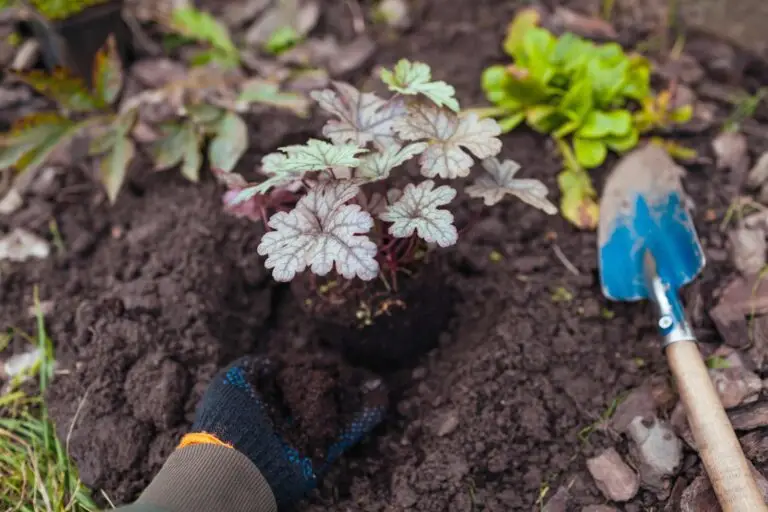
Fix #1: Move plants to a better spot
If you’ve planted something in a “bad” spot—maybe it’s too sunny, too shady, or just not working where it is—you can move it.
Yes, it really is that easy!
All you need is a shovel or trowel
Plants are easy to move around—all it takes is a shovel or trowel and 30 minutes or less to move most plants.
How to Move a Plant
- Pick the Right Day: Choose a cool, cloudy day for the move. Early spring or late fall works best when plants are less active.
- Prep the New Spot: Dig a hole slightly wider and deeper than the plant’s roots. This gives them space to spread out.
- Water the Day Before: Hydrated roots are easier to dig up and less stressed during the move.
- Dig Carefully: Use a shovel to dig a wide circle around the plant, aiming to scoop up as much of the root system as possible.
- Lift Gently: Lift the plant by its root ball, not the stems. Use a tarp or cardboard for heavy plants.
- Replant: Place the plant in its new hole at the same depth it was before. Fill the hole with soil, pat gently, and water deeply.
- Add Mulch: Spread a thin layer of mulch to lock in moisture and protect the roots.
- Keep an Eye on It: Water the plant regularly for the next few weeks, especially if it’s warm. A little wilting at first is normal—it’s adjusting!
A note on taproots
Some native plants are trickier to move because of their long taproots. These roots help plants survive drought by reaching deep into the soil for water, but they can make transplanting tough.
Fortunately, only a small number of native plants have this type of root, so most are easier to move.
Plants with long taproots include:
Ok, we’ve covered tip #1 for fixing a gardening mistake. Now, let’s move on to another idea to help alleviate any mistake anxiety.

Maybe your gardening mistake leads to losing a plant; now it’s time for a replacement. There is a local and often free way to bounce back:
Fix #2: Replace plants with freebie plants from neighbors and garden groups
When you lose a plant to frost, heat, or the lawn mower, don’t despair—check out local plant groups to find a replacement. Chances are, there will be someone who can offer some freebies from their garden or advice on where to go to find replacements.
An incredible secret of native gardening is that many neighbors and garden groups give away native plants for free. All you have to do is post or search local garden boards on Facebook, join a local gardening group, or even just strike up a conversation with a neighbor whose garden you admire, and suddenly—free plants.
Tips for finding Facebook plant groups
Try these beginner-friendly keywords in Facebook’s group search to find what you need:
- “Native plant swap [your state or region]”
- “Plant giveaways [your city or town]”
- “Native gardening [your state]”
- “Free garden stuff [your state or region]”
- “Native plant enthusiasts [your area]”
You can also combine keywords like “native plants” with the name of your town or state (e.g., “Native Plants Pennsylvania” or “Florida Plant Swap”).
Find your native plant society
Another incredible resource is your local native plant society. Every state has a native plant society (or several of them) that hosts events and plant sales or connects you with other gardeners. Visit our list of Native Plant Societies to find yours.
Or, visit a nearby native nursery
We’ve put together four easy resources organized by state or region to help you find what you need:
Where can I find seeds and plants?
Finding native plants can be challenging (we partly blame Marie Antoinette.) To make it easier, we’ve assembled four sourcing ideas.
300+ native nurseries make finding one a breeze
Explore 100+ native-friendly eCommerce sites
Every state and province has a native plant society; find yours
Online Communities
Local Facebook groups are a great plant source
Fix #3: As a last resort, you can always replant lawn
It can feel like a huge, scary step to dig up lawn and replace it with a native garden.
What if it dies?
What if you don’t like it?
What if you change your mind?
The truth is that it is very easy to replant lawn with seed or sod if you feel you made a mistake. Although lawns are much more work than native gardens, billions of dollars worth of landscapers, grass seed, and lawn tools are in ample supply. If you want to go back to the lawn, you can.
A quick reminder as you may consider this—
Native gardens are easier than lawns
Native gardens are cheaper and easier than lawns. We have an article on the pros/cons to prove it. There is less work, less water, and less fertilizer when you plant a native garden. It’s easy to see stacked up:
Lawn
Basic needs for a suburban lawn-
Needs water during drought periods
-
Reseeding in spring/fall
-
Weekly mowing
-
Requires weeding (or chemicals)
Native Garden
Basic needs for a native garden-
Only needs rain
-
Perennials come back year after year
-
No special care after plants are established
-
No weeding with mulch or gravel
Whether you’re moving a plant, replacing one, or starting over, every mistake is easy to bounce back from. Native plants are resilient and adaptable—they’re made for second chances.
So, go ahead: experiment, make mistakes, forgive yourself, and bounce back. Your garden will grow with you. Happy planting!

